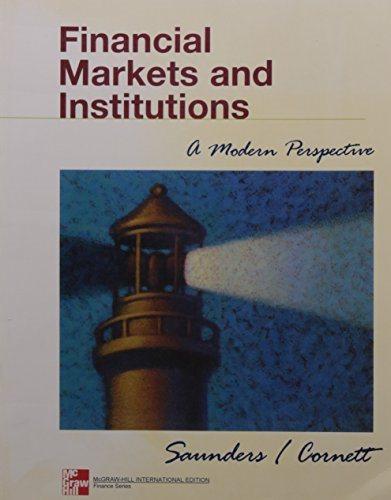
Question 7 a. The maximum price that an investor should pay for these corporate bonds today =$867.57 b. The price of the bond after one year if the annual yield to maturity falls to 6%=$972.10 c. From parts a and b, it is clear that there exists an inverse relationship between bond price and interest rate i.e. when interest rates decrease, the price of bonds increases and vice versa. Question 8 a. A rise in the times interest earned ratio of an issuing firm leads to a fall in a firm's default risk, a factor that decreases the yield to maturity of a bond of the corporation. b. A rise in the debt-equity ratio of a bond-issuing firm leads to a rise in the firm 's default risk. The increase in default risk, in turn, leads to a decrease in the price of the bond and an increase in the yield to maturity of the bonds of the firm as yield to maturity is proportional to the risk level of a firm. c. A rise in the quick ratio of an issuing firm leads to a rise in short-run liquidity. The increase in the short-run liquidity means a fall in the firm 's default risk, a factor that leads to a decrease in the yield to maturity of the firm 's bonds. Question 7 a. The maximum price that an investor should pay for these corporate bonds today =$867.57 b. The price of the bond after one year if the annual yield to maturity falls to 6%=$972.10 c. From parts a and b, it is clear that there exists an inverse relationship between bond price and interest rate i.e. when interest rates decrease, the price of bonds increases and vice versa. Question 8 a. A rise in the times interest earned ratio of an issuing firm leads to a fall in a firm's default risk, a factor that decreases the yield to maturity of a bond of the corporation. b. A rise in the debt-equity ratio of a bond-issuing firm leads to a rise in the firm 's default risk. The increase in default risk, in turn, leads to a decrease in the price of the bond and an increase in the yield to maturity of the bonds of the firm as yield to maturity is proportional to the risk level of a firm. c. A rise in the quick ratio of an issuing firm leads to a rise in short-run liquidity. The increase in the short-run liquidity means a fall in the firm 's default risk, a factor that leads to a decrease in the yield to maturity of the firm 's bonds







